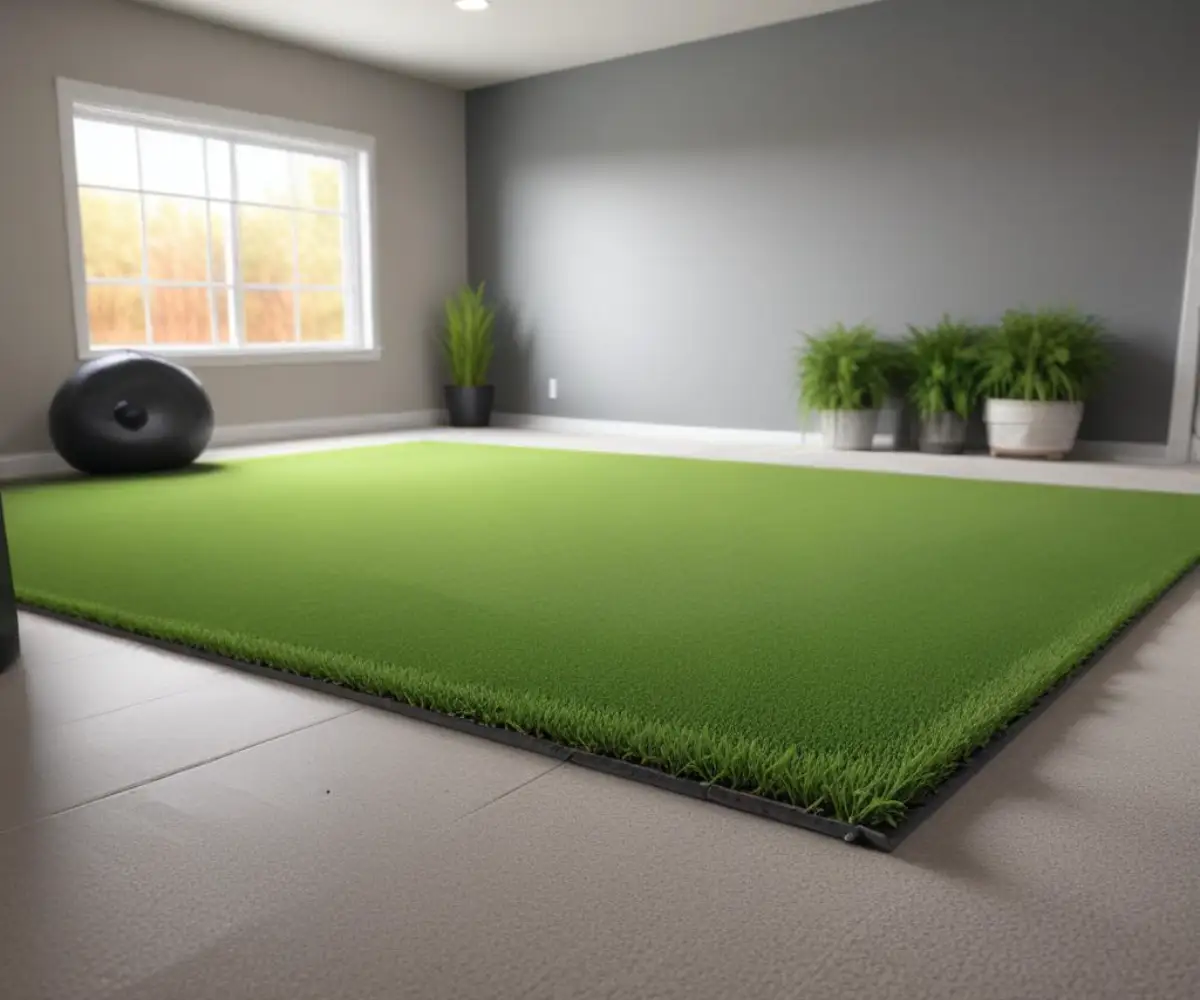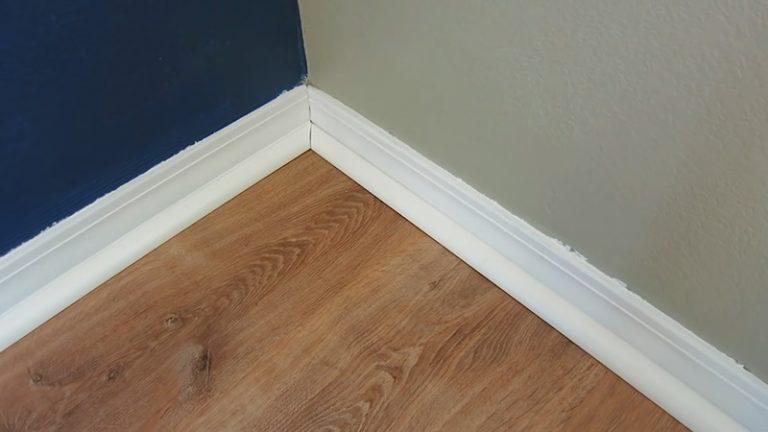Turf in Basement: Your Secret Weapon for a Dream Space
That cold, hard, uninviting concrete floor. It’s the defining feature of many basements, turning what could be valuable living space into a neglected storage area. You have a vision for a home gym, a vibrant playroom, or a cozy entertainment zone, but the harsh reality of a concrete slab holds you back.
This common problem leaves homeowners with an entire floor of their house that feels disconnected and underutilized. Traditional flooring options like carpet can feel risky in a moisture-prone basement, while tile or vinyl can be cold and unforgiving. There is, however, a surprisingly effective and stylish solution that many overlook: installing artificial turf.
You'll Learn About
Why Turf in the Basement is a Game-Changing Upgrade
Imagine a basement floor that is soft, vibrant, and incredibly versatile. Artificial turf transforms the look and feel of a basement, providing a comfortable and durable surface perfect for a wide range of activities. It’s a practical choice that offers significant advantages over conventional flooring.
The aesthetic appeal is immediate; the lush green instantly brightens up a typically dim space, creating a unique and inviting atmosphere. Beyond looks, turf offers a cushioned surface that is gentler on joints than concrete, making it ideal for workouts and safe for children’s play areas. This unique flooring solution turns a problem space into a purposeful one.
The Unseen Benefits of Modern Artificial Grass
Today’s artificial turf is a far cry from the abrasive plastic mats of the past. Modern synthetic grass is engineered for comfort and resilience, making it an excellent choice for indoor applications. It requires minimal maintenance—no watering or mowing needed—and is remarkably easy to clean with just a vacuum or occasional spot treatment.
Furthermore, high-quality turf is built to withstand heavy use, from intense workouts to energetic kids. It’s a long-lasting investment that solves the problem of finding a durable, safe, and attractive basement flooring. Many turf products also come with padded backings, adding an extra layer of shock absorption and comfort underfoot.
Choosing the Perfect Turf for Your Basement Transformation
Selecting the right artificial turf is crucial for achieving the best results. Several factors come into play, including the material, pile height, and backing. Understanding these elements will help you choose a product that matches your specific needs, whether for a high-impact gym or a soft play area.
The primary materials used for turf fibers are nylon, polyethylene, and polypropylene. Each has distinct characteristics in terms of durability, softness, and cost. Considering how you plan to use the space will guide you to the best material choice for long-term satisfaction.
A Breakdown of Turf Materials
Nylon is the most durable and resilient turf material, making it excellent for high-traffic areas or home gyms where equipment might be dragged. Polyethylene offers a great balance of softness and durability, closely mimicking the feel of real grass, which is perfect for playrooms. Polypropylene is a more budget-friendly option, best suited for low-traffic, decorative areas.
For most basement applications, a turf with a shorter pile height (the length of the grass blades) is recommended. Shorter piles are easier to clean and provide a more stable surface for activities. For specialized uses, such as a home putting green, you would look for a very specific, dense, and short-piled turf.
| Turf Material | Key Characteristics | Best Basement Use |
|---|---|---|
| Nylon | Highest durability, excellent resiliency, most expensive. | Home gyms, high-traffic athletic areas. |
| Polyethylene | Soft feel, good durability, realistic appearance. | Children’s playrooms, multi-purpose recreational spaces. |
| Polypropylene | Lower cost, less durable, softer texture. | Decorative accents, low-traffic lounges. |
The Secret to Flawless Installation: Subfloor is Everything
The single most critical factor for a successful and long-lasting basement turf installation is the preparation of the subfloor. While it might be tempting to roll turf directly over concrete, this approach can lead to significant problems like moisture buildup, mold growth, and an uneven surface. Proper subfloor preparation is non-negotiable.
A pristine concrete subfloor is the foundation of your project. It must be thoroughly cleaned, completely dry, and perfectly level. Any cracks or holes should be filled and smoothed over to prevent imperfections from showing through the turf.

Moisture: The Hidden Enemy
Basements are notoriously prone to dampness. Before installation, it is essential to conduct a moisture test on your concrete slab. If moisture levels are high, you must apply a vapor barrier or a sealant to prevent water from wicking up and getting trapped under the turf backing, which can lead to mold and unpleasant odors.
For added protection and comfort, installing a shock-absorbing underlayment or padded layer is highly recommended. This not only makes the floor softer but also promotes air circulation and provides an additional buffer against moisture. When considering options, you may find that a quality Astro Turf for basement guide provides valuable insights into different padding solutions.
A Step-by-Step Guide to DIY Turf Installation
With careful planning, installing artificial turf in your basement can be a manageable DIY project. The process involves meticulous preparation, precise cutting, and secure fastening. Following these steps will ensure a professional-looking and durable result.
First, acclimate the turf by unrolling it in the basement for at least 24 hours to allow it to relax and flatten out. Ensure the subfloor is clean, dry, and level before beginning. Gather all your tools, including a sharp utility knife, measuring tape, adhesive or seam tape, and a weighted roller.
From Roll to Floor: The Installation Process
Start by laying the turf pieces out, ensuring the grain of the fibers all run in the same direction for a uniform appearance. Make precise cuts around walls and obstacles, changing your knife blade frequently to ensure clean edges. If you have multiple pieces, you’ll need to create seams.
To seam the turf, align the edges of two pieces perfectly without overlapping. Fold the edges back and apply seam tape to the subfloor. Spread a specialized turf adhesive on the tape, then carefully press the turf edges back down onto it. Once all pieces are in place, use a 100-pound roller to press the turf firmly into the adhesive and ensure a strong bond.
Beyond the Floor: Creative Basement Turf Ideas
Installing turf in your basement opens up a world of possibilities beyond just a simple floor covering. It can be the foundation for a dedicated-use space that adds significant value and enjoyment to your home. The unique properties of turf make it adaptable to numerous creative applications.
Think of it as a blank canvas for your hobbies and family activities. The durability and comfort of artificial grass can transform an underused basement into the most popular room in the house. Let’s explore some of the most popular and innovative uses.
Create the Ultimate Home Gym
Artificial turf is an exceptional flooring choice for a home gym. It provides the ideal surface for agility drills, sled pushes, and functional training. The cushioned surface is forgiving on joints during high-impact workouts, while its durability can withstand the weight of heavy equipment.
Unlike hard rubber mats, turf provides a versatile surface suitable for a wide range of exercises, from yoga to weightlifting. The vibrant green can also create a more energetic and motivating workout environment. As you plan your gym, consider how to heat the space efficiently; a situation where an electric wall heater glowing red could indicate a problem needing attention to ensure safety.
Design a Dream Playroom
For families with children, a turf basement is a game-changer. It creates a safe, soft, and fun indoor play area where kids can run and play freely, regardless of the weather outside. The padded surface helps cushion falls, reducing the risk of injuries.
Spills and messes are easy to clean up on artificial turf, making it a practical choice for a kids’ zone. You can even add playful elements like painted lines for a mini sports field. It transforms the basement into a year-round backyard experience.
Maintaining Your Lush Basement Oasis
One of the most significant advantages of indoor artificial turf is its low maintenance requirements. However, “low maintenance” does not mean “no maintenance.” Regular, simple care will keep your turf looking fresh and extend its lifespan for years to come.
The primary tasks involve routine cleaning to remove dust and debris and occasional deeper cleaning for spills or stains. Establishing a simple maintenance routine will ensure your investment continues to look its best. Proper care is straightforward and not time-consuming.
Simple Steps for a Clean Turf
For general upkeep, vacuuming the turf once a week is usually sufficient to remove dust, crumbs, and other loose debris. Use a vacuum without a beater bar to avoid damaging the turf fibers. For any flattened areas in high-traffic zones, use a stiff, non-metal brush to gently fluff the fibers back up.
For spills, act quickly by blotting the area with a clean cloth. Most stains can be removed with a simple solution of mild soap and water. For tougher substances like gum, you can harden it with ice before gently scraping it off the fibers.
Potential Pitfalls and How to Expertly Avoid Them
While installing turf in a basement offers numerous benefits, there are potential issues that can arise if the project is not planned and executed correctly. Being aware of these common problems allows you to take preventative measures and ensure a successful outcome.
The most significant challenges revolve around moisture control, subfloor integrity, and choosing the right quality of turf. Addressing these issues proactively is far easier than trying to fix them after the installation is complete. A little foresight goes a long way.
Tackling Moisture and Ensuring a Level Surface
As mentioned, uncontrolled moisture is the biggest threat to a basement turf installation. Always perform a moisture test and apply a sealant or vapor barrier if necessary. Proper subfloor leveling is equally critical; an uneven surface can cause the turf to wrinkle or bubble over time, creating tripping hazards.
Another consideration is the quality of the turf itself. Opting for a cheap, low-quality product can lead to problems like shedding fibers, discoloration, and rapid matting. Investing in a higher-quality turf designed for indoor use will provide better performance and a longer lifespan. Finally, ensure the room’s entry points are secure. If you find you have to push door to lock deadbolt, it might indicate a door alignment issue that could affect the room’s seal and climate control.
Transform Your Basement with Confidence
Installing turf in your basement is an innovative and highly effective way to solve the problem of cold, underutilized space. It offers a unique combination of aesthetic appeal, comfort, durability, and versatility that few other flooring options can match. From a high-performance home gym to a safe and vibrant children’s playroom, the possibilities are endless.
By focusing on the crucial steps of selecting the right product and meticulously preparing the subfloor, you can create a stunning and functional new living area in your home. It’s a project that not only adds usable square footage but also injects a new level of fun and utility into a once-forgotten space. Embrace the green and unlock the full potential of your basement.

